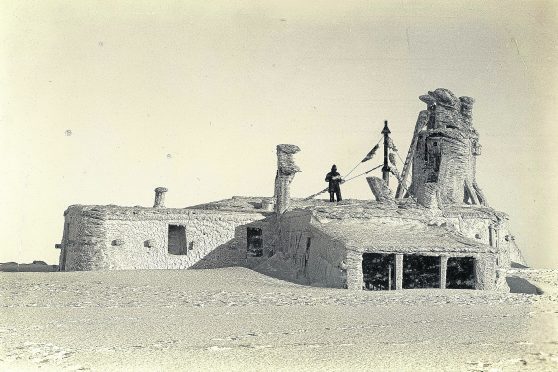For more than 20 years, a team of hardy Victorians painstakingly recorded vital information about the weather on top of Britain’s highest mountain.
The weathermen of Ben Nevis measured temperature, pressure, rainfall, sunshine, cloudiness, wind strength and wind direction, every hour – day and night – all the year round.
From 1883 to 1904, in often dreadful conditions, the volunteers dutifully went about their task which resulted in five hefty volumes of meteorological information.
But now their work from the past is being brought into the 21st century as scientists want thousands of people to help “digitise” all their data.
Operation Weather Rescue: Ben Nevis was launched today as part of the UK Natural Environment Research Council, NERC’s, free public event, UnEarthed, which will be held in Edinburgh, in November.
People can assist by typing the information gathered by the Ben weathermen from the original tables into a growing database.
This will help to shed light on how our climate is changing and give a better understanding of both the weather today and in the future.
Julia Maddock, NERC UnEarthed director, said: “We have set ourselves an ambitious target of rescuing two million data points by November so we can share what we have discovered at our free event.
“I am hoping that lots of people will be up for this challenge.”
Professor Ed Hawkins, of the National Centre for Atmospheric Science and the University of Reading, said: “These men lived up on Ben Nevis in often freezing conditions half the time taking measurements in the dark.
“They felt it was their duty to record all the atmospheric information, so unearthing this type of data feeds into the bigger picture and will help international researchers understand climatic changes and make better forecasts for the future.
“People who want to help don’t need to spend a lot of time on it – 15 minutes or even half an hour will help.”
Marjory Roy, a former superintendent of Met Office Edinburgh, is also supporting the campaign.
She is the author of “The Weathermen of Ben Nevis”, a fascinating insight into the work and lives of the men who gave their time on the top of the mountain to make the original weather observations.
Ms Roy said: “The conditions on top of the Ben could be pretty difficult, but they recorded the information meticulously.
“It’s very interesting as there are a lot of similarities in the weather between then and now especially between the rainfall comparisons.
“After they finished their work on the Ben some of the men went to Argentina on the Scotia expedition and worked in a climate office there.”
To help digitise the data collected by the Ben weathermen, visit www.weatherrescue.org
UnEarthed will be held at Dynamic Earth in Edinburgh from November 17 to 19.
xxxxxxxxxxxxxxxxxxxxxxxxxxxxxxxxxxxxxxxxxxxxxxxxxxxxxxxxxxxxxxxxxxxxxxxxxxxxxxxxxxxxxxxxxxxxxxxxxxxx
